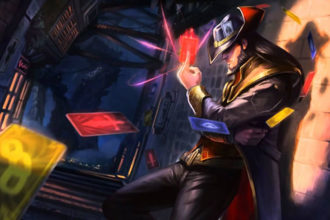Travel Methods in Your Game

Most games consist of characters walking from place to place. Perhaps they’ll be riding mounts or riding in a wagon. Or even on occasion, they’ll fly to get over gaps, teleport, phase through objects, etc. The problem with these methods of transport is despite the characters having these abilities, they just don’t come into play all that often. Why not make them a more integral part of the gameplay?
Walking
Characters walking from “Point A” to “Point B” is pretty much the “default” for most tabletop RPGs. Most people aren’t going to be bringing their horses into a dungeon. That is until the characters reach a high level. But by that time, they have many other ways of getting around obstacles. Furthermore, at low-level, even smaller mounts like riding dogs aren’t too practical to bring. Are you going to want to ask your companions to cast “fly” on your riding dog so it can get over the bottomless pit?
Walking at surface-level may seem so commonplace that it doesn’t merit mention. However, there’s a bit more going on with this movement than one might think. In real life, I’m a quite clumsy person. Add to that fact I have weak ankles, prone to twisting, sprains. What this means is that holes, unleveled areas, or misstep risks me taking a nasty fall. To compensate, I’ve developed a keen ability to catch myself on nearby objects to avoid a fall. Because most places characters skulk about aren’t level, DMs should ask players to check for balance every so often. Failure can mean they trip or kick a rock that makes a horrible racket, attracting monsters.
Unlevel surfaces and holes aren’t even the only hazards. Working in a museum, I saw people routinely tripping over stanchions and art display platforms, and falling up (or down!) stairs. Even if they didn’t fall, the patrons still had to catch themselves. Anything that isn’t immediately noticeable in line-of-sight may be a falling hazard. Add to that wet, slippery, or sticky surfaces, and even smooth, level surfaces can be hazardous.
Riding on mounts
Characters riding from place to place is so mundane that it almost needs no mention. But keep in mind there are other factors in play. Unless they’re a character like a monk or wizard, characters don’t ever seem to take off their armor. If DMs want a more realistic campaign, characters who don’t take off their armor at regular intervals may suffer consequences. In 5th ed D&D, these consequences might be suffering from a level or two of exhaustion. This level or two of exhaustion won’t go away until the character spends a night without armor. In these circumstances, while traveling overland, characters might decide to wear lighter or less restrictive armors.
Because you’re dealing with an animal, there are a few other factors to consider.
- Characters need to understand the dynamics of the animal (or magical beast) they’re using as a mount.
- How intelligent is the creature they’re using?
- What is the creature’s anatomy? How well can it handle the additional weight a character or load might be putting on it? Are there optimal places to put this extra weight so as not to give the mount problems?
- Characters need to worry about the animal behaving.
- No one wants an unpredictably violent animal. Characters demand animals that will attack their enemies, but not them. But if the animal gets injured, they may lash out, unable to distinguish friend from foe.
- Neither do characters want one that will get spooked in battle. Animals in RPGs are assumed to be battle-hardened, but in reality, this is not so.
- Characters also don’t want the animal to run off to mate. That’s why most male mounts are gelded.
- Then there’s the fact that you have to care for it properly.
- Food for a mount takes space. However, foraging takes time. So there’s a balance. Maybe a solution might be to bring some food for when there’s no foraging available. A hungry animal may lash out at its owner.
- Characters need to show appreciation to their mounts. Mounts routinely being put in harm’s way, used as a “meat shield” or not allowed food, proper rest, or adequate care may decide to run away.
- Grooming mounts is another consideration. Not only do the animals sweat, but they also need to be checked for loose shoes, stones in their feet, and vermin. Furthermore, if characters bring a haggard-looking animal into town, NPCs may be hesitant or not be willing to sell them another one.
- Even if the characters are in a hurry, they need to make sure that they don’t run their mounts into the ground. Characters need to monitor mounts for signs of exhaustion if they want them to serve them in the long-run.
Flight
The power of flight is the penultimate method of travel in fantasy games. How will you represent its power? Does the character have wings, like Hawkman or some half-dragon species? Or do they have some sort of gravity-defying power? Maybe magic holds them aloft. Perhaps instead of flying, the character “leaps over tall buildings in a single bound.” Or they could be gliding, using updrafts to maintain the illusion of flight, or as Buzz Lightyear said (Toy Story Franchise) he was “Falling with style.” However flight is represented, each character’s ability should be unique.
Riding in vehicles
Riding in a vehicle – be it a wagon, train, plane, boat, or car, there are a few considerations.
The first consideration is the vehicle’s speed. How fast is it going? If there are other vehicles in the vicinity, how fast are they going in comparison?
Another factor to consider is the noisiness of the vehicle. How noisy (or quiet) is it? If it’s loud like a motorcycle, will the characters need to take a different route to avoid notice?
Then we need to consider the vehicle’s stability. Can it make hairpin turns going at full speed, or does it need to slow down considerably to avoid tipping over or overturning?
A further consideration is the surface medium. Roads may have potholes, cracks, rumble strips that may slow vehicles down. Oceans have waves that affect how steering a boat works. Train tracks deal with expansion and contraction with the elements that affect how fast the train can go. Should the material expand or contract too much, it may cause the train to derail. Even an airplane can have instability in the medium it is traveling through, hence air turbulence.
Then there’s the consideration of the vehicle’s controls. How easy is it started? Is it relatively simple, as a car’s ignition switch? Can it be easily hotwired? How easy is it controlled? Are the controls simple, or are they so complex it requires an entire crew? How large is the vehicle? How much distance does it take to maneuver? Or is it like a mecha, requiring unique training to make sure the characters can pilot it effectively?
Finally, vehicles using other methods of locomotion than animals to propel them use fuel. In the real-world, this fuel is carbon-based. In a magical setting, the fuel might be ley-lines, trapped elementals, or even souls.
Other Notable Forms of Transport
There are a few other notable methods of transportation that are useful to note in your games.
- Jumping/ bouncing: This is a method primarily found in video games. The character bounds around, using their momentum to get to higher locations. In a superhero game, the character may be rubbery or elastic. If the character has epic levels of “jump” or “acrobatic” skills, they may even double-jump (depending on the system used).
- Swinging: This is the classic Spiderman method of travel. Spiders and creatures with spiderlike powers would have access to this.
- Burrowing: the character digs underground. Unsuspecting characters may be surprised. Furthermore, burrowing creatures may have special nests or interconnected holes to get around the area. For a real-life example, see gopher holes.
- Phasing: the character can pass through objects as if they were not there. Most systems have if the character stops in a solid object, they take damage. The only way I could see this happening is if the phased character starts to resolidify. If one so phased can remain thus indefinitely, s/he wouldn’t take damage.
- Shadow Jumping: the character can step from one shadow to another. In doing so, users may bypass danger, be in a better position to attack, and possibly even shield themselves from physical harm by becoming a shadow themselves.
- Teleportation: characters can traverse vast distances, sometimes (depending on the spell), even travel between planes of existence. Some considerations to note with this:
- Magic interruption: what happens if the magic is tampered with while transporting the character(s)? Does it simply fail? Or does it work, and the characters end up somewhere they don’t want to be?
- Technological Interruption: if something additional is in the teleporter, something like the movie “The Fly” can happen.
Travel is an integral part of tabletop RPGs that is often hand-waived, but it doesn’t need to be. Each step along the way could be turned into a way of shaping the world. Use these tips to make various forms of travel – and the consequences of using each more of a part of your game!



